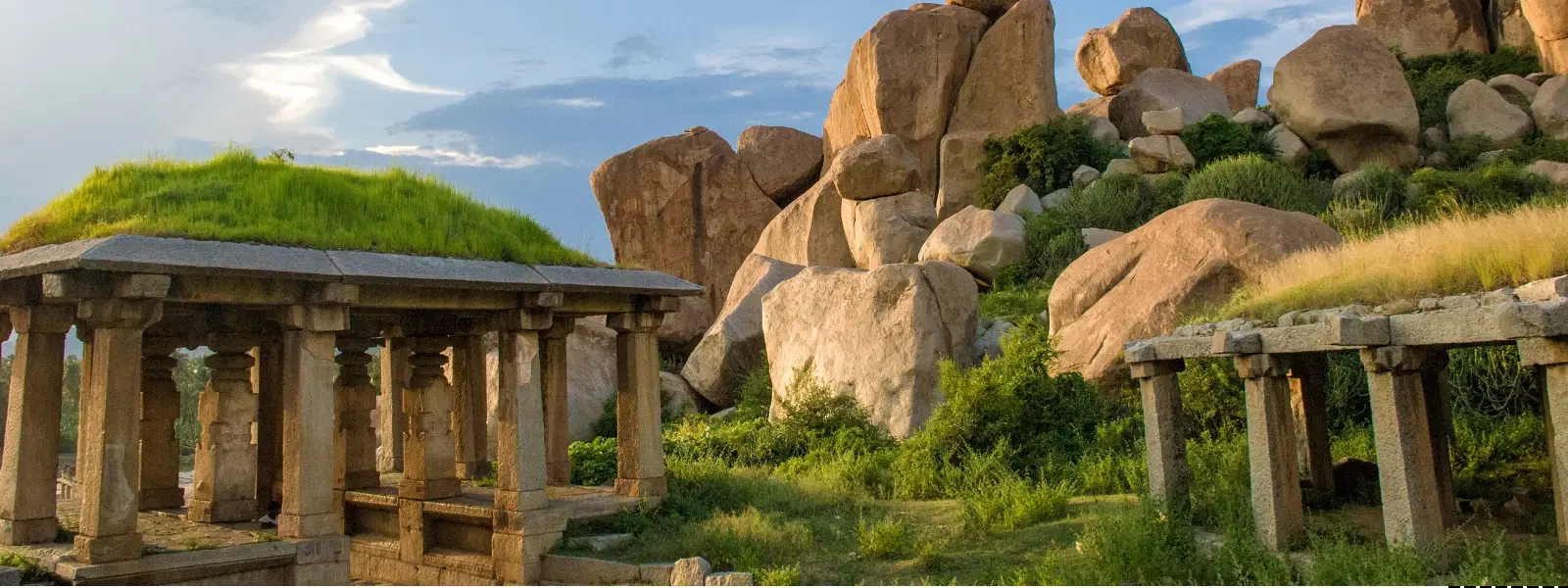
Flights
•04 min read

The early morning sky blushes with hues of pink and gold as the first rays of sunlight gently kiss the rugged outlines of nature's masterpieces. The interplay of light and shadow over natural rock structures creates a mesmerizing scene that captivates photographers, hikers, and all who appreciate scenic rock landscapes. In this blog, you will discover expert insights on sunrise rock formations, uncover essential photography tips, explore geological revelations, and learn about the best locations to experience these breathtaking phenomena.
At dawn, the sun's soft, warm light interacts uniquely with rock surfaces. As the sky lightens, the golden hour creates dramatic contrasts and subtle shadows, accentuating the textures of every crevice and ridge. This natural transformation turns ordinary rock formations into vibrant canvases where the warm tones of early morning light enhance every detail. The blend of colors and textures highlights the impressive beauty of rock formations at dawn, making them irresistible to lovers of sunrise photography spots.
Certain geological formations, such as columnar basalt, sandstone arches, and granite cliffs, become especially enchanting under morning light. These stunning rock structures owe their unique shapes and textures to natural processes like erosion, sedimentation, and tectonic activity. As the sun rises, these geological formations at sunrise reveal hidden details that are often missed during other times of the day, presenting nature's artistry in its most authentic form.
Taking exceptional photos of sunrise rock formations requires planning and a keen eye for detail. For optimal sunrise photography, start by setting up your camera before the sun peeks above the horizon. Experiment with low ISO settings (around 100-200) to preserve the clarity and temperature of light. Use a narrow aperture (f/8 to f/16) to capture the intricate details of the rock surfaces. Emphasize the textures and natural shadows by carefully selecting your composition and using the natural light to highlight the rugged beauty of these early morning rock sceneries.
Quality gear can make all the difference when capturing the subtle details of morning light on rocks. A sturdy tripod is essential to avoid camera shake during low-light conditions. Wide-angle lenses are excellent for capturing expansive scenic rock landscapes, while filters can help manage glare and balance the intense sunrise hues. Prepare for the chill of the early morning by dressing warmly and protecting your equipment against moisture, ensuring that your setup remains ready for the best natural rock structures moments at dawn.

Some destinations have become legendary for their sunrise rock formations. Locations such as Monument Valley in the United States, Uluru in Australia, and Giant’s Causeway in Northern Ireland offer some of the most iconic backdrops for sunrise photography. Each setting has its distinct allure: the vast, open landscapes of Monument Valley provide unparalleled panoramic views; Uluru dazzles with its deep cultural history and stunning silhouette; and Giant’s Causeway captivates with its unique hexagonal basalt columns. These spots stand out as prime examples of early morning rock scenery that have inspired both amateur and professional photographers alike.
Beyond the well-known sites, there are many hidden gems waiting to be discovered. Local trails and lesser-known parks often boast spectacular rock formations that come alive at sunrise. For the adventurous traveler eager to uncover off-the-beaten-path locations, thorough research and local recommendations can lead you to pristine areas where the charm of natural rock structures is undisturbed. Embrace the spirit of exploration and find those secluded sunrise hiking trails where you can truly connect with nature.
To fully enjoy the magic of sunrise rock formations, preparation is key. Start your journey early, allowing plenty of time to navigate the terrain and find the perfect spot. Review maps or local guides to identify the best sunrise photography spots and confirm access routes for your chosen location. When planning a sunrise hike, pack essentials such as water, snacks, and layers suitable for the brisk morning air. Taking safety precautions and scouting your location beforehand ensures you have ample time to savor every moment of the spectacular dawn.
Experiencing sunrise rock formations is more than just capturing a beautiful photograph—it is a chance to connect deeply with nature and the geological history that shaped these wonders. As you stand before these monumental structures, take a moment to reflect on the processes that carved them over millennia. This mindful observation can transform a simple hike into an enriching journey that bolsters your appreciation for our planet’s dynamic art. Remember, in every sunrise and in every natural rock structure, there is a hidden story waiting to be discovered. []

The best time is during the golden hour, shortly after sunrise when the light is soft and warm.
Research local parks and geological sites; many apps and websites provide detailed trail maps and sunrise timing recommendations.
Use a low ISO (100-200), a narrow aperture (f/8-f/16), and a tripod for stability, adjusting shutter speed according to the lighting conditions.
Clear weather is ideal for vibrant colors, but light clouds can add drama and depth to your images.
The interplay of light and shadow during sunrise brings out textures and colors that remain hidden under the intense midday sun.
Sunrise rock formations offer a unique blend of nature’s artistry and geological marvels that captivate the soul. This guide has provided insights into the science behind these phenomena, practical photography tips, and a curated list of iconic and hidden spots to experience early morning rock scenery. By preparing well and engaging deeply with each moment, you can transform your sunrise experience into a lifelong memory that inspires further exploration of scenic rock landscapes.